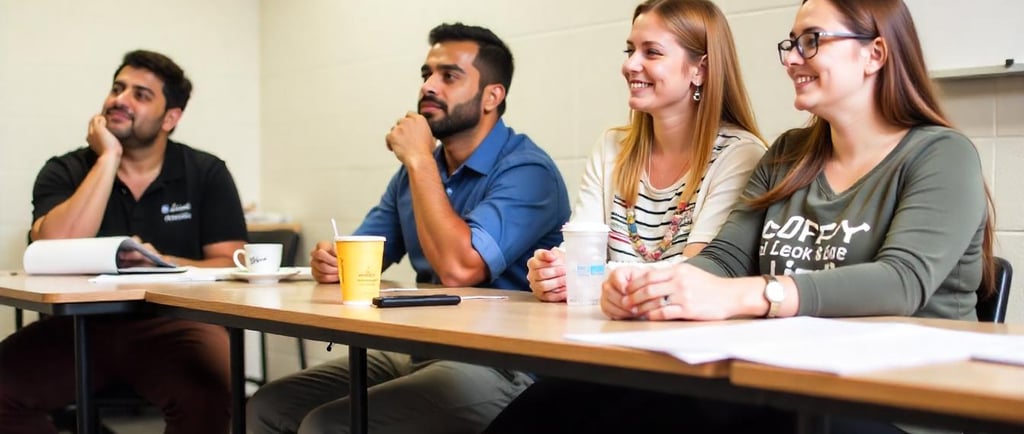How to Learn Kinyarwanda Fast: Pronunciation, Grammar, and Practice Guide
How to Learn Kinyarwanda Fast: Pronunciation, Grammar, and Practice Guide learn Kinyarwanda, Kinyarwanda grammar, Kinyarwanda pronunciation, Kinyarwanda lessons online, Afrilingual Sounds, Kinyarwanda Learning Hub Internal links to your courses or homepage
10/20/20253 min read


Master Kinyarwanda Online with Afrilingual Sounds
Welcome to the Kinyarwanda Learning Hub by Afrilingual Sounds, your complete platform to learn Kinyarwanda online through audio lessons, video tutorials, and downloadable PDF exercises.
Our mission is to help beginners, tourists, expats, and students speak Kinyarwanda confidently and understand Rwanda’s culture with ease.
Set Your Language Goals
To succeed in your Kinyarwanda learning journey, start by setting clear, achievable goals.
Decide whether you aim for basic conversational Kinyarwanda, professional fluency, or simply want to learn Kinyarwanda for travel.
💡 SMART goals examples:
“Learn 10 new Kinyarwanda words daily.”
“Hold a 5-minute conversation after 3 months.”
Consistency matters more than long study sessions — even 20 minutes of daily practice with our audio or video Kinyarwanda lessons will help you progress faster than hours once a week.
Use our progress tracking feature to stay motivated and monitor improvement.
Understand Kinyarwanda Pronunciation
Kinyarwanda pronunciation is logical and easy to learn once you know the basics.
It’s a tonal language, meaning that voice pitch changes word meaning.
Vowel sounds:
A – like “a” in father
E – like “e” in let
I – like “ee” in see
O – like “o” in go
U – like “oo” in boot
Consonant rules:
C before y sounds like “ch” (cy → “ch”)
G is always hard, as in go
R is lightly rolled, similar to Spanish r
🎧 Practice with our Kinyarwanda audio lessons to improve pronunciation and accent naturally.
Listen to native speakers from Afrilingual Sounds’ Kinyarwanda Learning Hub and master every tone confidently.
Master Essential Kinyarwanda Greetings and Phrases
Greeting people in Kinyarwanda is one of the best ways to connect with locals and show respect.
Here are the most important expressions to start with:
Muraho – Hello
Mwaramutse – Good morning
Mwiriwe – Good afternoon/evening
Amakuru? – How are you?
Ni meza – I’m fine
Murakoze – Thank you
Yego – Yes
Oya – No
Practice daily using our interactive Kinyarwanda phrase lessons and PDF flashcards.
Learning greetings through Afrilingual Sounds’ audio lessons helps you develop a natural flow and cultural understanding.
Explore the Basics of Kinyarwanda Grammar
Grammar is the backbone of every language, and Kinyarwanda has a unique system based on noun classes.
These noun classes (16–18 total) determine how verbs, adjectives, and nouns interact.
Subject prefixes:
N- → I
U- → You (singular)
A- → He/She
Tu- → We
Mu- → You (plural)
Ba- → They
Example:
➡️ Ndashaka (I want) → N- (I) + -ra- (present tense) + -shak- (want) + -a (ending).
Our grammar-focused Kinyarwanda lessons and downloadable PDF exercises make these patterns easy to understand.
Practice Kinyarwanda Through Exercises
Building fluency requires consistent practice. Try these interactive exercises from our Kinyarwanda Learning Hub:
🗣️Kinyarwanda Greeting Practice:
Complete the dialogue:
You: ___ (Hello)
Friend: Muraho! Amakuru?
You: ___ (I’m fine)
Friend: Murakoze
📝 Verb Practice – Gukunda (to like/love):
I like → ___
You like → ___
He/She likes → ___
We like → ___
Phrase Matching:
Match the Kinyarwanda phrases with their English meanings:
Ndashaka amazi – I want water
Ndi umwarimu – I am a teacher
Mfite imyaka makumyabiri – I am twenty years old
Ntuye i Kigali – I live in Kigali
Use our interactive PDFs or audio drills to check your pronunciation and accuracy.
Avoid Common Kinyarwanda Mistakes
New learners often make similar mistakes when studying Kinyarwanda online. Here’s how to fix them:
Noun class confusion: Use flashcards to remember which prefixes go with which nouns.
Tonal errors: Practice tone and rhythm by listening to native speakers.
Word order: Kinyarwanda follows a Subject–Verb–Object structure, but modifiers usually follow the nouns they describe.
Making mistakes is natural. Focus on progress, not perfection — and remember, Rwandans appreciate your effort!
Your Path to Kinyarwanda Fluency
Reaching fluency in Kinyarwanda takes consistency, guidance, and interactive learning tools.
While self-study helps, working with a native Kinyarwanda tutor gives you authentic pronunciation and faster results.
With Afrilingual Sounds’ Kinyarwanda Learning Hub, you can:
✅ Learn with native speakers online
✅ Access video lessons, audio practice, and PDF materials
✅ Track your progress and earn a Kinyarwanda certificate
If you want personalized 1-on-1 lessons, platforms like Preply also offer native tutors who specialize in Kinyarwanda for work, travel, and daily life.
Start today and speak Kinyarwanda with confidence!
Bonus: Quick Answers to Exercises
Kinyarwanda Greeting Exercise:
You: Muraho
Friend: Muraho! Amakuru?
You: Ni meza
Friend: Murakoze
Verb Practice – Gukunda:
I like → Ndakunda
You like → Urakunda
He/She likes → Arakunda
We like → Turakunda
Phrase Matching:
Ndashaka amazi – I want water
Ndi umwarimu – I am a teacher
Mfite imyaka makumyabiri – I am twenty years old
Ntuye i Kigali – I live in Kigali
Start Learning Kinyarwanda Now
🎓 Take your first step toward fluency with Afrilingual Sounds – Kinyarwanda Learning Hub.
Access video tutorials, audio pronunciation guides, and interactive PDF lessons all in one secure platform.
KINYARWANDA & swahiliLEARNING HUB
Kinyarwanda & swahili Learning Hub by Afrilingual Sounds helps foreigners and diaspora learn Kinyarwanda and swahili, explore east africa’s culture, and gain confidence when visiting east africa.
Contact
afrilingualsounds@gmail.com
+250783707477
© 2025 Afrilingual Sound. All rights reserved.
Subscribe to our newsletter
